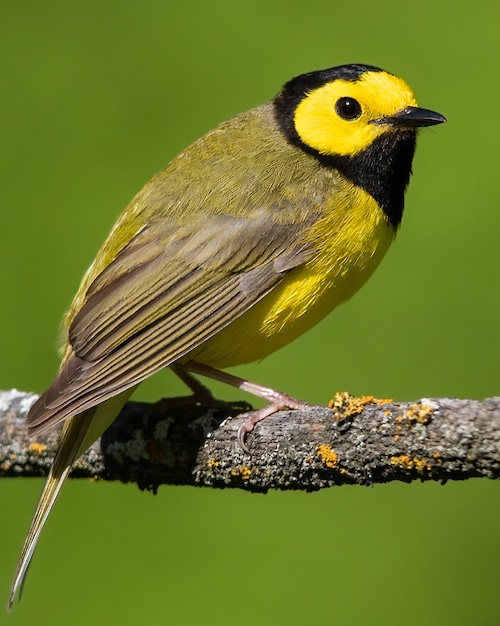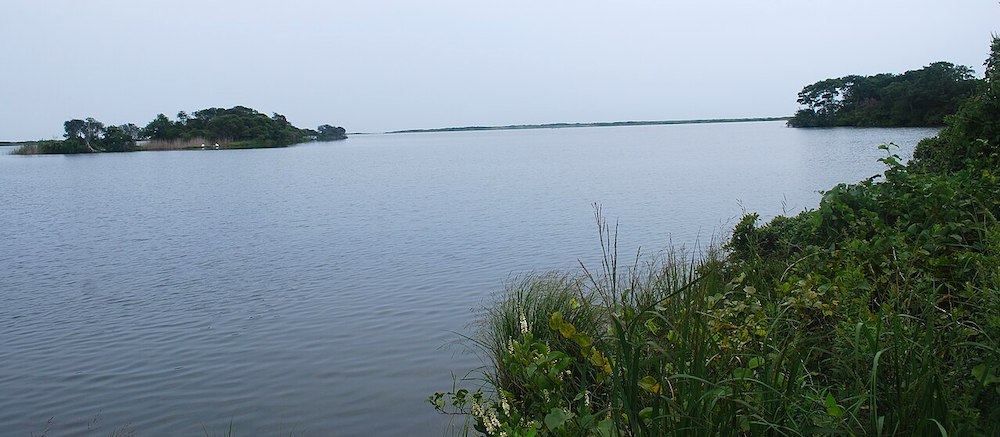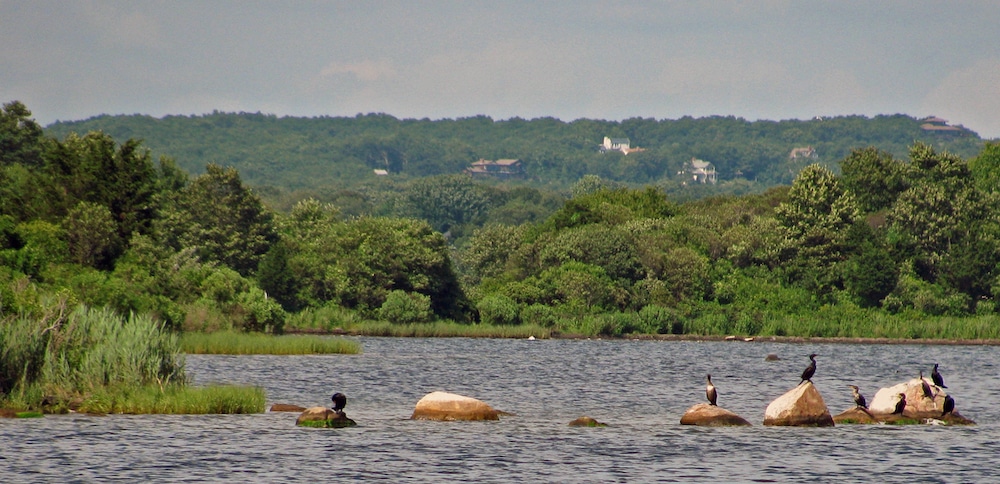State of Rhode Island and Providence Plantations

Rhode Island is a state in the New England region of the Northeastern United States. It borders Connecticut to its west; Massachusetts to its north and east; and the Atlantic Ocean to its south via Rhode Island Sound and Block Island Sound; and shares a small maritime border with New York, east of Long Island. Rhode Island is the smallest US state by area at just under 2,700 km2 (just over 1,000 square miles) and the seventh-least populous, with just over 1.1 million residents and is the second-most densely populated state, after New Jersey. The state takes its name from the eponymous island, though nearly all its land area is on the mainland. Most of Rhode Island has a humid continental climate, with warm summers and cold winters. The state’s southern coastal portions are the broad transition zone into subtropical climates, with hot summers and cool winters with a mix of rain and snow. Block Island has an oceanic climate.
The state’s mean elevation is 200 feet. It is only 60 km (37 miles) wide and 77 km (48 miles) long, yet the state has a tidal shoreline on Narragansett Bay and the Atlantic Ocean of 618 km (384 miles). Rhode Island is nicknamed the Ocean State and has a number of oceanfront beaches. It is mostly flat with no real mountains. The state has two distinct natural regions. Eastern Rhode Island contains the lowlands of the Narragansett Bay, while Western Rhode Island forms part of the New England upland. Rhode Island’s forests are part of the Northeastern coastal forests ecoregion. Narragansett Bay is a major feature of the state’s topography. There are more than 30 islands within the bay; the largest is Aquidneck Island, which holds the municipalities of Newport, Middletown, and Portsmouth. The second-largest island is Conanicut, and the third is Prudence. Block Island lies about 12 miles (19 km) off the southern coast of the mainland and separates Block Island Sound and the Atlantic Ocean proper. Providence is its capital and most populous city.

Trustom Pond NWR – ©Juliancolton, Public domain, via Wikimedia Commons
Rhode Island’s forests are part of the Northeastern coastal forests ecoregion characterised by Appalachian Oak Forest and White Pine Region of southern New England. Before Europeans came to Rhode Island, forest covered about 90% of the state. Settlers cleared extensively for farming through the 1800s until 3/4 of the state was open. During the 1900s, the forests began to recover and, by 1985, 60% of the state was once again covered by forest. This was the peak for forest regrowth, however, as the late 1900s brought a rise in urban development. Today, the biggest challenge for Rhode Island (and all states) is forests fragmentation. Historically, the dominant forest type in Rhode Island was oak/hickory.
For a small state, Rhode Island has the whole range of wetlands. Freshwater wetlands include ponds, wet meadows, swamps (mostly red maple swamps) and freshwater marshes and are the most abundant wetland type on Rhode Island (87%). The riverine wetlands in Rhode Island are freshwater tidal emergent wetlands, river and stream aquatic beds and floodplain shrub areas and riparian forest.
Its saltwater or brackish wetlands are either marine with rocky shores and sandy intertidal beaches or estuarine with salt marshes, tidal zones, aquatic beds, coastal shrub-scrub wetlands, and mudflats and are all along the coast and around the islands. Estuarine wetlands make up about 11% of Rhode Island’s wetlands.
Birding Rhode Island
The state bird is the Rhode Island Red, a popular breed of chicken. The colouring includes golden brown feathers that tend to become reddish in the sun. Their eyes are orange and have reddish brown beaks and yellow feet.
Rhode Island may be the smallest state in the US, but it certainly isn’t lacking in bird species, they outnumber those in some of the larger states. Inland the woodland is especially good for small passerines such as Hooded Warbler.

Ninigret National Wildlife Refuge – ©US Fish & Wildlife Service, Public domain via Wikimedia Commons
The Atlantic Coastline in the state tends to have the best birding localities. For example, a disused military airfield used to be where Ninigret National Wildlife Refuge is now. The refuge provides excellent birding to visitors. A top spot is its Ninigret Pond as are the shrubby fields and woodlands. Least Tern, Cedar Waxwing and American Redstart are some of the nesting birds in the refuge. Block Island National Wildlife Refuge is another top spot, especially in Autumn. You can meet so many bird watchers here. All kinds of species have shown up here, including Cave Swallow and Say’s Phoebe. All told, Rhode Island has recorded c.450 species of birds. Newport and Providence have counts of 356 and 279 respectively.
Block Island not only has the largest species count among the hotspots with over 300, but it also has recorded some of the rarest species. Both Trustom Pond NWR and Sachuest Point NWR also deserve a special mention. The species count in these places ranges between 286 and 255.
-
Number of bird species: 450
(As at October 2024)State Bird: Rhode Island Red Gallus gallus
-
Avibase
PDF ChecklistThis checklist includes all bird species found in Rhode Island , based on the best information available at this time. It is based on a wide variety of sources that I collated over many years. I am pleased to offer these checklists as a service to birdwatchers. If you find any error, please do not hesitate to report them. -
RIBird
PDF ChecklistBirds Recorded in RI -
Wikipedia
Annotated ListThis list of birds of Rhode Island is a comprehensive listing of all the bird species confirmed in the US state of Rhode Island. Unless otherwise noted, the list is that of the Rhode Island Avian Records Committee (RIARC) with some additions from Avibase. As of July 2021, there are 446 species on the list, of which 175 have nested. In addition, 123 are considered vagrants, six have been introduced to North America, and two are extinct. -
eBird
PDF ChecklistThis checklist is generated with data from eBird (ebird.org), a global database of bird sightings from birders like you. If you enjoy this checklist, please consider contributing your sightings to eBird. It is 100% free to take part, and your observations will help support birders, researchers, and conservationists worldwide.
-
Bird Walks in Rhode Island
| By Adam J Fry & Keith Gannon | Backcountry Publications | 1992 | Paperback | 146 pages, Maps, illustrations | Out of Print | ISBN: 9780881502183 Buy this book from NHBS.com -
Birding New England
| A Field Guide to the Birds of Connecticut, Rhode Island, Massachusetts, Maine, New Hampshire, and Vermont | By Randi & Nic Minetor | Falcon Guides | 2019 | Paperback | 352 pages, 395 colour photos, 1 colour illustration, 144 maps | ISBN: 9781493033881 Buy this book from NHBS.com -
Birds of Rhode Island
| By Marc Parnell | Naturalist & Traveler Press | 2022 | Paperback | 280 pages, colour photos | ISBN: 9781954228405 Buy this book from NHBS.com -
Birds of Rhode Island
| Seasonal Distribution and Ecological History | By Richard L Ferren | Comstock Publishing Associates | 2024 | Hardback | 559 pages, 20 plates with 28 colour photos and 7 colour maps; 11 b/w illustrations | ISBN: 9781501771330 Buy this book from NHBS.com -
Rhode Island Birds: An Introduction to Familiar Species
| By James Kavanagh & Raymond Leung | Waterford Press | 2003 | Unbound | 1 page, colour illustrations | ISBN: 9781583552254 Buy this book from NHBS.com
-
Bird Observer - New England Birding Journal
JournalFifth Report of the Rhode Island Avian Records Committee
-
Audubon Kingston Wildlife Research Station
Ringing StationSatellite ViewSeveral times each week from May through August, Cindy Dibble visits three sites in Narragansett and South Kingstown where Osprey are known to nest, and during each visit she watches the birds and makes notes about what she sees. She documents when the birds arrive on migration, when they mate, when they begin incubating their eggs, and when the fledglings make their first flight, among other milestones. All of her observations are then uploaded to Audubon’s Osprey Monitoring Program website. -
Block Island
Ringing StationSatellite ViewApproximately 13 miles of the southern coast of Rhode Island in Narragansett Bay lies a teardrop-shaped natural wonder: Block Island. In the fall, countless numbers of migrating birds stop at Block Island to rest and refuel before continuing their journeys to distant southern latitudes. Often times, their destinations are thousands of miles away in Central and South America.
-
Brown University
FacultyDepartment of Ecology, Evolution, and Organismal Biology -
University of Rhode Island
CourseAvian Ecology - Ornithological research at URI is diverse and interdisciplinary. Faculty and their students study songbirds, woodcock, shorebirds, waterfowl, and Arctic nesting geese—to name a few.
-
Audubon Society of Rhode Island
WebsiteStay involved with Audubon's birding programs and resources: Audubon's Upcoming Birding Programs; Recent Bird Sightings; Report a Sighting; BIG YEAR in a little state; Audubon Avian Ambassadors -
Brown University Birding Club
WebpageWelcome to the Brown University Birding Club website! We'll be posting a schedule of events, birding pictures, and information about birds around Providence. -
Nature Conservancy in Rhode Island
WebsiteMake a Difference in Rhode Island - When you donate today, you’ll help ensure a future in which people and nature can thrive. -
Ocean State Bird Club
WebsiteConnecting birders across Rhode Island and Southeastern New England -
Ornithological Council
WebpagePermits and access -
RIBird
WebsiteState Bird Records, checklists etc.
-
*Protected areas of Rhode Island
InformationSatellite ViewArboreta, Parks, Forests , Reservoirs etc. -
BS Gallilee Marshes
WebpageSatellite ViewThe Galilee Marsh is a 52 hectare marsh located within the Galilee Bird Sanctuary in Narragansett, Rhode Island, approximately 32 miles south of Providence, Rhode Island and 30 miles east of New London CT. The Galilee Escape Road is a four lane causeway that bisects the marsh separating extensive salt marsh habitat to the north of the causeway (The "North Unit" from smaller units (East, Central and West Units) to the South. Salt marsh habitat within the Galilee Bird Sanctuary was enhanced by the replacement of twin 75 cm diameter culverts with 1.8 meter high x 1.4 meter wide twin culverts and self-regulating tidal gates in 1997 which expanded the reach of the tidal range south of the causeway. The salt marsh system of Galilee Marsh is similar to the nearby Succotash Marsh, South Kingstown in that both systems provide breeding habitat for a number of salt marsh birds including the Saltmarsh Sharp-tailed and Seaside Sparrows (Ammodramus caudacutus and A. maritimus), Willets(Catoptrophorus semipalmatus), and Clapper Rails (Rallus longirostris). Greater and Lesser Yellowlegs (Tringa flavipes and T. melanoleuca), Semipalmated Plovers (Charadrius semipalmatus), Least Sandpipers (Calidris minutilla) and other shorebirds frequent the marsh during spring and fall migrations. -
BS Norman Bird Sanctuary
WebsiteSatellite ViewNorman Bird Sanctuary is a wildlife sanctuary and environmental education center with more than 325 acres of diverse habitats and 7 miles of hiking trails. -
IBA Prudence & Patience Islands
WebpageSatellite ViewPrudence and Patience Islands are located in Rhode Island's Narragansett Bay. Prudence Island, together with Conanicut Island to the south, form the dividing line between Narragansett Bay's East and West Passages. Prudence Island and its smaller sister island, Patience Island, both lie within the municipal jurisdiction of the Town of Portsmouth in Newport County. Three large salt marshes along with associated fringe marsh on the north end of Prudence Island and an additional marsh on the adjacent Patience Island together provide habitat for a sizeable Saltmarsh Sharp-tailed Sparrow population. -
IBA Weetamoo Woods
WebpageSatellite View -
NWR IBA Trustom Pond
WebpageSatellite ViewThe Trustom Pond IBA includes fine examples of Rhode Island's coastal habitats. For instance, it contains the only undeveloped salt pond left in Rhode Island. This salt pond has not been artificially or permanently breached by man and is a major feature of the IBA, supporting a variety of waterfowl species whose collective numbers range into the thousands during the spring and autumn migration and wintering seasons. The varied habitats in Trustom Pond support more than 300 bird species, including breeding and winter residents, and migratory stopover spp. -
NWR Ninigret
WebpageSatellite ViewThis site contains extensive tidal sand flats. Much is underwater at high tides and most is exposed at low tides. This area was created when a breachway to the ocean was made. Currents have caused silt and sand to collect over the years creating the tidal flats. This area is very important to migratory shorebirds. It is their main foraging place in the state. More than 100 species have been sighted here, including rare and endangered species. The sand flats are bordered by grassy salt marsh areas that are used by breeding Seaside and Saltmarsh Sharp-tailed sparrows. Also there is an area of deciduous trees and shrubs used by herons for roosting and which shelters other species. The whole site also features salty ponds and channels. -
Rhode Island Refuges - US Fish & Wildlife Service
Facebook PageSatellite ViewListings of useful numbers, areas of special interest etc… -
SP Brenton Point
InformationSatellite ViewOccupying the former grounds of one of Newport's grandest estates, Brenton Point State Park affords its visitors one of the most commanding and spectacular views on the East Coast. The park is located at the point of land where Narragansett Bay meets the Atlantic, midway along renowned Ocean Drive. -
WMA Sapowet Marsh
WebpageSatellite ViewThe Sapowet Marsh is a 260 acre state-owned wildlife management area located in the town of Tiverton Rhode Island approximately 9 miles northeast of downtown Newport, and approximately 19.5 miles southeast of Providence. This IBA lies proximal to the Emily Reucker Wildlife Refuge which is owned by the Audubon Society of Rhode Island (ASRI). The main ornithological significance of this site is its importance to Saltmarsh Sharp-tailed Sparrow.
-
Birding Hotspots
HotspotsRhode Island Birding Hotspots -
Rhode Island Bird Reports
Facebook PageThe mission of this page is to create a place to share field reports and other information pertinent to Rhode Island Birds and Birding. -
eBird - Rhode Island Rare Bird Alert
SightingsThe report below shows observations of rare birds in Rhode Island. Includes both unreviewed and reviewed/approved observations.
-
Providence Birding Adventure
GuidingJoin naturalists from the Audubon Society of Rhode Island and the Providence Parks Urban Wildlife Refuge Partnership for a free GUIDED BIRD WALK in Providence -
Snappa Charters
Local Pelagic TripsSouth of the R.I. coastline, your will find a variety of seabirds. In the summer months it is common to see the Greater Shearwater, Cory's Shearwater, WIlson's Storm-Petrel, Pomarine Jaeger, Parasitic Jaeger, and the Northern Fulmar. Other summer birds not seen as frequently are the South Polar Skua, Leach's Storm-Petrel, Long tailed Jaeger, Sabine's Gull, and the Arctic Tern. -
Ventures Birding Tours
Tour OperatorThis tour will take us on an extensive exploration of Cape Cod and Southern Rhode Island...
-
2021 [10 October] - Kevin Burke
Report...Trustom Pond is just on the other side of the dunes and provides some fresh water habitat for wintering waterfowl. We had quite a few new birds to the trip including Bufflehead, American Widgeon, American Black Duck, and Ring-necked Duck. A cooperative Common Raven perched on a snag for all of us to see. We had the beach to ourselves for the most part, and it was a great way to end a very productive day in Rhode Island. We finished with one last seafood dinner before our departure in the morning... -
2022 [11 November] - Kevin Burke
Report...We then headed to Sachuest Point National Wildlife Refuge. The two-mile loop trail here is an awesome birding spot. Highlights here included Peregrine Falcon, Merlin, Harlequin Duck, and Swamp Sparrow. It is just a nice place to take a morning walk. We headed over to Brenton Point State Park in Newport. On the way we took in the huge mansions that make Newport famous. They are truly spectacles of architecture. Another spectacle was just offshore when we spotted a King Eider associating with some Common Eiders. It was a lifer for most of the group! We did two more stops in the afternoon. The first was a small roadside beach that held Horned Lark and Lapland Longspur. Our final stop of the day was at Moonstone Beach. It is known for its smooth stone that line the beach. The stones are colorful and beautiful. We had good looks at quite a few Mute Swans. We had a great day of touring Southern Rhode Island...
-
Block Island Reservations
RentalsHundreds of “birders” flock to Block Island each fall, as do thousands of Warblers, rare Sparrows and vagrants. A National Wildlife Refuge was established in 1973 with the transfer of 28 acres from the US Coast Guard. Today the refuge covers 127 acres at the North end of the island. Over 70 species of migratory song birds visit the island each fall. The Piping Plover, a threatened species, may be found here. Block Island is home to the largest Gull colony in Rhode Island. As one of the most important migratory habitats on the East Coast, Block Island is the perfect spot for for your next eco friendly vacation.
-
ABA Birding News - Rhode Island
WebsiteRecent Postings from Rhode Island Birds -
BirdZilla
WebsiteThe 25 Most Common Birds of Rhode Island -
Birds of New England
WebsiteSome excellent photographs -
Birdwatching Academy & Camp
WebpageBirds in Rhode Island -
RIBird
WebsiteThis site contains information about birds and birding in the state of Rhode Island. It is not affiliated with any organization.

